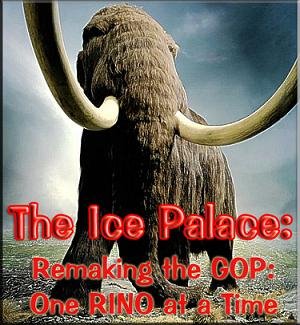Now's not the time to drink the Kool Aid...on the contrary...
As the MSM has more often than not been so wrong and has gone so far as to outright lie lo' this past decade, I have admonished you to not believe a word you see or hear from the alphabets or the dead paper media.
If you've listened to the MSM the past few weeks, you no doubt "know" that conservative voters are going to be staying home in droves this election season, due to the Mark Foley flap, the failed strategy in Iraq, and other supposed Bush administration failures.
But when you look at the real numbers, you must realize that the spate of anti-republican hit pieces has been more a product of a fertile imagination than anything real:
The RNC's internal research shows election interest at 7.7 on a 10-point scale among Republicans and 7.6 among Democrats, unchanged from late September and in line with this year's overall trend.
Gallup (Oct. 6-8)
To quote from Gallup's voter turnout projection, "Gallup's latest analysis suggests Republicans and Democrats are now roughly even in terms of anticipated turnout in the midterm congressional elections. The voting intentions of the large pool of registered voters is now similar to the voting intentions of the smaller pool of likely voters, showing no disproportionate impact of turnout in either direction"
Gallup asked, "How motivated do you feel to get out and vote this year -- extremely motivated, very motivated, somewhat motivated, not too motivated or not at all motivated?(% "extremely" or "very" motivated)" The following table shows that the GOP in fact now holds a slight lead, up from just a few months ago:
GOP
DEM
NET
Sept 15-17, 2006
70%
67%
+3
Jun 23-25, 2006
74%
77%
-3
Oct 3-6, 2002
65%
55%
+10
Oct 29-Nov 1, 1998
59%
57%
+2
Oct 23-25, 1998
67%
56%
+11
Oct 9-12, 1998
59%
53%
+6
Sep 23-24, 1998
73%
62%
+11
Cook/RT Strategies (Oct. 5-8)
On a scale of one to 10, Republicans and Democrats have almost equally high mean election interest scores (8.2 for Republicans, 8.1 for Democrats), but Democrats hold a slight edge in the percentage of their voters who are "highly interested"--47 to 51 percent.
However, keeping in mind the local nature of midterm elections, it is more important to consider intensity by state or congressional district. RT Strategies/Constituent Dynamics (conducted Oct. 8-10) released district-by-district polling showing Republicans have a slight edge in partisan intensity. GOP "voter motivation" is higher than Democratic motivation in 19 of 32 competitive House races, in some cases by as much as a full point on a 1 to 9 scale. Democratic intensity is higher in the remaining 13, and in none of those races is the difference higher than 2/3 of a point.
Additional Data
A recent Pew study (9/21-10/4) found that while roughly similar numbers of Republicans (41%) and Democrats (39%) are "regular" voters, more Republicans (25%) than Democrats (20%) vote intermittently--meaning there are more of our voters for us to turn out in a midterm election. Furthermore, Democrats (20%) are substantially more likely than Republicans (14%) to not be registered to vote at all.
Other Measures of Intensity
There are ways besides polls to measure the intensity of the Republican base, and those also indicate that GOP voters are strongly engaged. Fundraising, for example, is often called the 'first ballot' for the simple reason that supporters only donate when they are involved and enthusiastic. That is why we are excited that the RNC received support from 362,000 new donors this cycle. We've averaged 8,256 contributions for each deposit day so far this year. We just announced that September has been our best financial month of the entire cycle. Our supporters know how important this election is, and their financial support shows it.
Volunteer enthusiasm is another key measure of intensity. Again, every indication here is that our base is working hard for victory in the 2006 election. Republican volunteers have contacted more than 14 million voters this year, and more than 7 million since Labor Day alone. We have made 1 million voter contacts every week for the past five weeks, and for six weeks we have surpassed the number of contacts we made at comparable times in 2004, a presidential election year.
The Bottom Line
Despite the media hype, an examination of all the facts makes it clear: the Republican base is active and engaged. No matter how you measure it--whether by record-breaking fundraising, unprecedented volunteerism, or scientific polling--the numbers show that Republicans understand the importance of the choice we all face on November 7.



|